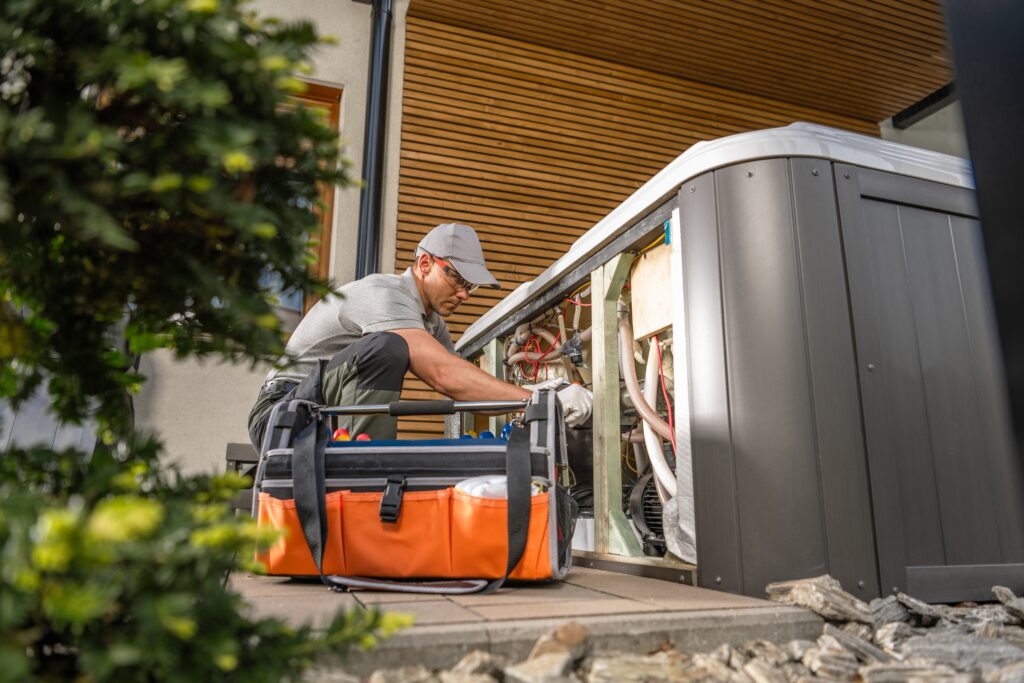Hot Tub Maintenance Guide

There’s nothing quite like sinking into a hot tub after a long day. But to keep that relaxation on tap, a little routine maintenance is essential. Think of it like this: your hot tub is an investment in comfort, and with just a bit of regular care, you’ll keep it running smoothly.
Hot tub maintenance isn’t just about keeping the water clear and inviting—it’s also key to protecting the lifespan of your equipment. From balancing the water chemistry to cleaning filters and keeping your tub sparkling clean, a few simple habits make a big difference.
Plus, staying on top of maintenance helps you avoid unexpected breakdowns and costly repairs. These tips will help you enjoy your tub to the fullest while avoiding common maintenance headaches.
Essential Hot Tub Maintenance Tasks
Keeping your hot tub in top condition doesn’t have to be a chore. Let’s break down the essential maintenance tasks that every hot tub owner should know.
Table of Contents
- 1. Regular Water Testing
- 2. Water Balancing and Chemical Maintenance
- 3. Cleaning and Draining the Hot Tub
- 4. Filter Maintenance
- 5. Cover Care and Protection
- Seasonal Maintenance Tips
- Troubleshooting Common Hot Tub Issues
- Professional Maintenance Services
- Benefits of Professional Maintenance Packages
- Additional Home Improvement Resources
1. Regular Water Testing
One of the most important things you can do for your hot tub is regular water testing. It’s quick, easy, and makes a huge difference in keeping your water safe.
How Often Should You Test?
Aim to test your water at least once a week—twice a week if you use your hot tub frequently. This helps catch any imbalances before they turn into bigger problems, like cloudy water or skin irritation.
What Are You Testing For?
There are three key parameters to keep an eye on:
- pH Levels: Should be between 7.4 and 7.6 for optimal comfort and efficiency.
- Alkalinity: Helps stabilize pH levels; should be around 80-120 ppm.
- Sanitizer Levels: Check for chlorine, bromine, or other sanitizers to make sure the water is free from bacteria.
Recommended Testing Kits:
- Test Strips: Affordable and easy to use—just dip and compare the colors.
- Liquid Test Kits: More precise, but take a little more effort.
- Digital Testers: Super accurate and quick, but a bit pricier.
2. Water Balancing and Chemical Maintenance
Once you’ve tested your water, it’s time to balance it. Keeping your water chemistry in check not only makes for a more enjoyable soak but also protects your hot tub components from damage.
Maintaining Optimal pH Levels:
- If the pH is too low (acidic), add a pH increaser.
- If it’s too high (alkaline), use a pH reducer.
- Aim to keep it between 7.4 and 7.6 to prevent corrosion or scale buildup.
Adjusting Alkalinity:
- Add an alkalinity increaser if levels are too low.
- To lower high alkalinity, use a pH reducer.
- Keeping alkalinity in check helps maintain a stable pH, so it’s worth the extra effort.
Using Sanitizers Like Chlorine or Bromine:
- Choose the right sanitizer based on your preference—chlorine is popular for its quick action, while bromine is gentler on the skin.
- Add sanitizer after every use or as needed to maintain safe levels.
- Shock the water weekly to break down organic contaminants and keep it crystal clear.
Safety Tips for Handling Chemicals:
- Always add chemicals to water, not the other way around.
- Store them in a cool, dry place away from direct sunlight.
- Wear gloves and avoid inhaling fumes when handling.
3. Cleaning and Draining the Hot Tub
Over time, even the cleanest hot tub needs a reset. Draining and cleaning your tub every 3-4 months helps maintain water quality and keeps your equipment running smoothly.
How Often Should You Drain and Refill?
- Every 3-4 months, depending on usage.
- Heavy use or strong chemical odors are signs it’s time for a refresh.
Step-by-Step Cleaning Guide:
- Turn Off the Power: Safety first—make sure the hot tub is off.
- Drain the Water: Use the drainage valve or a submersible pump for faster results.
- Clean the Shell: Use a non-abrasive cleaner and a soft cloth to scrub away buildup.
- Tackle the Jets: Use a pipe cleaner or brush to clear out any gunk.
- Clean the Cover: Wipe it down with mild soap and water, then condition it to maintain flexibility.
- Refill and Balance the Water: Once cleaned, refill with fresh water and rebalance chemicals.
Recommended Cleaning Products:
- Non-foaming hot tub cleaner
- Mild, pH-neutral soap for the cover
- Vinegar for natural cleaning
4. Filter Maintenance
Your hot tub filter works hard to trap dirt, oils, and debris, so it’s essential to keep it clean and functioning well.
How Often to Clean or Replace Filters:
- Rinse weekly to remove surface debris.
- Soak in a filter cleaner every month to break down oils and buildup.
- Replace the filter every 12-24 months, depending on usage.
Tips for Removing Debris and Buildup:
- Use a garden hose to rinse off loose dirt.
- Soak filters in a cleaning solution overnight for a deeper clean.
- Never use household detergents—they can cause foaming and water contamination.
Signs Your Filter Needs Attention:
- Reduced water flow or pressure
- Cloudy or dirty water despite regular maintenance
- An increase in energy consumption
5. Cover Care and Protection
Your hot tub cover does more than just keep out leaves and dirt—it also helps regulate water temperature and saves energy. Taking care of it will prolong its life and keep your tub ready for use.
Cleaning and Conditioning the Cover:
- Use a mild soap and water solution to wipe down the exterior.
- Apply a vinyl conditioner every few months to prevent cracking.
- Avoid harsh chemicals that can damage the material.
Preventing Mold and Mildew:
- Keep the cover slightly ajar after use to let moisture escape.
- Wipe down the underside regularly to prevent buildup.
- Use a cover lift to avoid dragging it on the ground, which can introduce contaminants.
Proper Storage and Weather Protection:
- Store the cover indoors during the off-season if possible.
- Secure the cover during storms to prevent wind damage.
- Invest in a high-quality cover specifically designed for your tub’s size and shape.
Seasonal Maintenance Tips
Your hot tub is a source of comfort and relaxation no matter the season, but how you care for it can change depending on the weather. Whether you’re bracing for winter or soaking under the summer sun, a few seasonal maintenance tasks can make all the difference in keeping your hot tub running smoothly. Let’s break down what you need to know for both cold and warm weather care.
1. Winterizing Your Hot Tub
When temperatures drop, hot tub maintenance becomes all about protecting your system from freezing and damage. Even if you love soaking on chilly nights, it’s crucial to prepare your tub for those extra cold months.
How to Safely Drain and Protect Your Hot Tub in Cold Climates
If you plan to keep your hot tub running through the winter, maintaining water quality and protecting components from the cold is essential. However, if you’re planning to close it down for the season, winterizing is a must.
Step 1: Turn Off the Power
- Safety first—make sure your hot tub is completely powered down.
Step 2: Drain the Water
- Attach a hose to the drainage valve and let the water flow out.
- Use a sump pump to speed up the process if you’re in a hurry.
- Once drained, use a wet/dry vacuum to remove any leftover water from the lines.
Step 3: Blow Out the Pipes
- Use your wet/dry vacuum on the jets to force out any remaining water.
- This step is crucial to prevent freezing and pipe damage.
Step 4: Add Antifreeze
- Pour a specialized, non-toxic antifreeze into the jets and lines.
- Make sure to follow the manufacturer’s recommendations on the amount.
- This step helps keep your pipes from freezing and cracking, especially in extremely cold climates.
Step 5: Clean and Protect the Cover
- Clean the cover thoroughly to remove dirt and mildew.
- Condition it with a vinyl protector to keep it flexible.
- Secure the cover tightly to keep out snow and debris.
Pro Tip:
If you plan to keep the tub running, consider installing a floating thermal blanket on the water’s surface. This extra layer helps retain heat and reduces energy consumption.
2. Summer Maintenance Best Practices: Keep Your Cool
When the sun’s blazing and temperatures are high, your hot tub needs a little extra attention to stay fresh and inviting. The key to summer maintenance is managing heat and increased usage while keeping your water clear and clean.
Managing High Temperatures and Increased Usage
Hot summer days can make your hot tub feel more like a hot spring than a refreshing retreat. Here’s how to keep things comfortable:
Lower the Temperature
- Adjust your thermostat to a cooler setting—around 85-95°F is perfect for daytime soaks.
- Some people even use their hot tub as a “cool tub” during summer by setting the temperature as low as possible.
Increase Filtration Cycles
- With more use and warmer weather, your hot tub can accumulate dirt and bacteria faster.
- Set your filtration cycle to run more frequently, especially if you’re hosting guests.
Keep the Water Cool and Clean
- Use a hot tub cover with reflective insulation to block the sun’s rays and reduce heat gain.
- Vent the cover slightly during hot days to let excess heat escape.
- Add a few buckets of cold water or ice to quickly cool down the temperature (just make sure your tub can handle it).
Regular Water Changes
- Increased usage means more oils, sweat, and sunscreen entering the water.
- Change the water more often during the summer to keep it clean and refreshing.
Quick Tips for Both Seasons:
- Always check your water chemistry when switching between hot and cold seasons—extreme temperatures can throw levels off.
- Keep a close eye on your filter during these transitional periods. Clogged filters can lead to overheating in summer or inadequate heating in winter.
- If you’re unsure about winterizing or dealing with summer heat, don’t hesitate to call a professional for guidance.
Troubleshooting Common Hot Tub Issues
Even with regular maintenance, hot tub issues can still pop up from time to time. The good news? Many common problems are easy to troubleshoot and fix on your own. Whether it’s cloudy water, weird smells, temperature troubles, or pesky leaks, knowing what to look for can save you from unnecessary stress—and repair bills. Let’s dive into some of the most common hot tub hiccups and how to handle them.
1. Cloudy or Foamy Water: What’s Going On?
You’ve just lifted the cover, ready for a relaxing soak, and—uh oh—your water looks like a murky swamp or a bubble bath gone wrong. Cloudy or foamy water is not only unappealing but can also signal that your hot tub chemistry needs some attention.
Common Causes:
- Imbalanced Water Chemistry: pH, alkalinity, or sanitizer levels may be off.
- Dirty Filters: A clogged or worn-out filter can’t effectively trap particles.
- Soap and Lotion Residue: Body oils, lotions, and detergents from swimsuits can build up over time.
- High Organic Contaminants: Sweat, dirt, or leftover cleaning agents in the water.
How to Fix It:
- Test and Balance Your Water: Check pH, alkalinity, and sanitizer levels. Adjust as needed to bring everything back into the proper range.
- Shock the Water: Use a non-chlorine shock to break down organic contaminants.
- Clean or Replace the Filter: Give your filter a thorough rinse or replace it if it’s past its prime.
- Drain and Refill: If the water is beyond saving, it’s time for a fresh start—drain the tub, clean the shell, and refill with balanced water.
- Use a Foam Reducer: If foam persists, adding a foam control agent can temporarily clear it up.
2. Unpleasant Odors
Nothing ruins the vibe faster than funky smells coming from your hot tub. Whether it’s musty, sour, or just plain weird, foul odors are usually a sign that bacteria or algae have taken hold.
Common Causes:
- Dirty Filters: Trapped organic matter can start to stink.
- Bacteria or Algae Growth: Insufficient sanitizer levels can let microorganisms thrive.
- Biofilm Buildup: A slimy layer can develop on pipes and surfaces if the water is not properly treated.
- Stagnant Water: If your hot tub hasn’t been used in a while, stagnant water can develop a smell.
How to Fix It:
- Check and Adjust Sanitizer Levels: Make sure your chlorine or bromine is within the recommended range.
- Shock the Water: An oxidizing shock treatment will kill bacteria and break down organic compounds causing the odor.
- Clean the Filter: Rinse or soak it in a cleaning solution to eliminate trapped debris and bacteria.
- Flush the Plumbing: Use a line flush cleaner to break down biofilm that might be hiding in the pipes.
- Drain, Clean, and Refill: If the smell persists, a full drain and scrub might be your best bet.
3. Temperature Fluctuations
One minute your hot tub is perfectly toasty, and the next it’s lukewarm—or worse, cold. Inconsistent temperatures can definitely put a damper on your soak.
Common Causes:
- Heater Malfunction: The heating element could be failing or clogged.
- Thermostat Issues: The thermostat might be broken or set incorrectly.
- Dirty or Blocked Filters: Reduced water flow can cause the heater to shut off.
- Sensor Problems: Temperature sensors may be faulty or misaligned.
- Low Water Level: If the water level drops too low, the heater may not function properly.
How to Fix It:
- Check Water Level: Top it off if it’s below the skimmer line.
- Inspect the Filter: Clean or replace it to ensure proper water flow.
- Reset the Heater: Sometimes simply powering off and restarting the system can resolve minor glitches.
- Inspect the Thermostat: Make sure it’s set to the desired temperature and functioning properly.
- Call a Professional: If the heater or sensors are the issue, it might be time to bring in an expert.
4. Leaks and Cracks
A little bit of water around the hot tub is normal after use, but constant puddles or noticeably dropping water levels indicate a leak. Finding the source can be tricky, but it’s essential to address it before more serious damage occurs.
Common Causes:
- Loose Fittings or Connections: Hoses or jets might have come loose over time.
- Cracked Shell: Hairline fractures can develop from heavy use or temperature changes.
- Damaged Seals or Gaskets: Rubber components can wear out or crack.
- Leaky Pump or Heater: These components can develop leaks if seals degrade.
How to Fix It:
- Inspect for Visible Leaks: Look around the base and pump area for wet spots or dripping.
- Tighten Connections: Use a wrench to snug up loose fittings, but be careful not to overtighten.
- Patch Minor Cracks: Use a hot tub repair kit to seal small cracks in the shell.
- Replace Worn Seals: If you spot leaking around pumps or heaters, swapping out old gaskets can solve the issue.
- Call a Pro for Major Leaks: If the problem seems extensive, a professional can diagnose and repair internal plumbing issues.
Professional Maintenance Services
Sometimes, even with the best DIY efforts, your hot tub might need a little extra help from the pros. Whether it’s a tricky repair, a deep clean, or just a routine inspection, professional maintenance services can be a game-changer for keeping your hot tub running smoothly.
Let’s talk about when it’s time to call in the experts and why professional maintenance packages are worth considering.
1. Complex Electrical Issues
- If your hot tub suddenly loses power, trips the breaker, or has wiring issues, it’s best to call an electrician or a certified hot tub technician. Working with electrical components can be dangerous, and guessing your way through it could lead to bigger problems.
2. Persistent Leaks
- A little drip now and then might just be condensation, but if you’re losing water consistently, it’s time to call in a pro. Leaks can come from hard-to-reach places like internal plumbing, pumps, or the heater unit, and fixing them without the right tools or expertise can make the problem worse.
3. Heater and Pump Troubles
- Your hot tub should heat up consistently and maintain a steady temperature. If it’s lukewarm, not heating at all, or making unusual noises, the issue could involve the heater element, pump, or thermostat. Diagnosing and replacing these parts can be tricky, so it’s better to let an expert handle it.
4. Unresponsive Control Panel
- When your control panel stops responding or displays error codes, it might be a sign of a faulty circuit board or sensor problem. A pro can quickly diagnose the issue and replace any malfunctioning components.
5. Deep Cleaning and Seasonal Overhaul
- While you can certainly do a lot of cleaning yourself, professional services are great for a thorough, once-a-year deep clean or seasonal maintenance, especially before winterizing. They’ll flush out the plumbing, clean the jets, and ensure your tub is spotless and balanced.
Benefits of Professional Maintenance Packages
If you’re thinking about signing up for a professional maintenance plan, you’re on the right track. These packages are designed to make hot tub care hassle-free, giving you more time to actually enjoy your soak instead of stressing about upkeep.
1. Regular Inspections to Catch Problems Early
- Professionals can spot minor issues before they turn into major repairs. Routine inspections often include checking the pump, heater, jets, and seals—areas that can wear out over time. Catching these problems early means fewer costly breakdowns and emergency calls.
2. Professional Water Testing and Balancing
- Sure, you can test the water yourself, but a professional can fine-tune the balance with expert precision. They’ll test for pH, alkalinity, calcium hardness, and sanitizer levels, making sure your water is crystal clear and safe to soak in.
3. Deep Cleaning and Thorough Maintenance
- A maintenance package usually includes deep cleaning services, like flushing the plumbing to remove hidden biofilm, cleaning the jets, and scrubbing the shell. Professionals also clean and replace filters when needed, so your hot tub stays in tip-top shape.
4. Seasonal Prep and Winterization
- As the seasons change, so do your hot tub’s needs. Professional services often include winterizing your tub to prevent freezing and damage or prepping it for heavier summer use. This ensures your tub is protected no matter the weather.
5. Peace of Mind with Scheduled Visits
- Once you’re signed up for a maintenance package, you can relax knowing that your hot tub care is already on the calendar. Most plans include quarterly or biannual visits, so you don’t have to worry about remembering maintenance tasks or dealing with unexpected issues on your own.
6. Warranty Protection
- Some manufacturers require professional maintenance to keep the warranty valid. Signing up for regular service ensures you’re covered in case anything goes wrong, and you’ll have documentation to prove your hot tub was well maintained.
Conclusion
Taking care of your hot tub might seem like a lot at first, but once you get into a routine, it’s really just about keeping things consistent. Setting a maintenance schedule is a game-changer—it helps you stay on top of tasks like cleaning, water testing, and balancing.
Plus, investing in quality covers and accessories not only keeps your hot tub looking great but also protects it from wear and tear. So, take a little time to care for your hot tub, and it’ll be ready whenever you need to unwind.
Additional Home Improvement Resources
- How to Make Your Home & Yard Pet Friendly
- How Much Does Crawl Space Encapsulation Cost?
- Termite Treatment Cost Guide

Anna has over six years of experience in the home services and journalism industries and serves as the Content Manager at MyHomePros.com, specializing in making complex home improvement topics like HVAC, roofing, and plumbing accessible to all. With a bachelor’s degree in journalism from Auburn University, she excels in crafting localized, comprehensive guides that cater to homeowners’ unique needs. Living on both coasts of the United States has equipped her with a distinctive perspective, fueling her passion for turning any house into a cherished home through informed, personalized decision-making.








